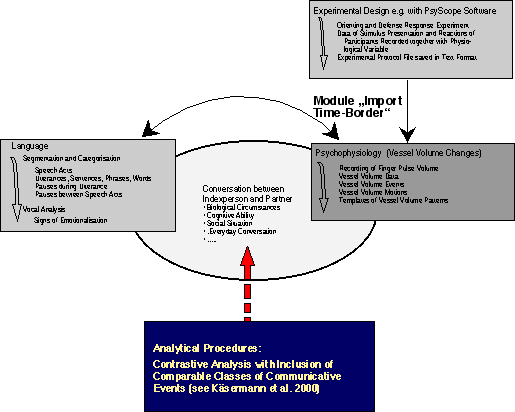
Factors influencing vessel volume changes: their integration into software for peripheral blood flow analysis
M.L. Käsermann, A. Altorfer and S. Jossen
Department of Psychiatric Neurophysiology, Psychiatric Institutions, University of Bern, Bern, Switzerland
There is consensus that psychophysiological variables such as vessel volume changes are apt indicators of emotionalization. The relevant theoretical background and some basic methods of analysis (VASC Analyser software) were already presented at the Measuring Behavior '98 conference in Groningen [1,2].

Figure 1. Integration of the sofware module "Import Time-Border" into VASC Analyser.
Several factors are known to influence vessel volume changes, e.g. listening to stressful partners' speech may have an arousing effect whereas speaking about anxiety-evoking events may calm down a high arousal level. The time-exact coordination between measures of such contextual and physiological events is by no means a trivial problem. Often it is still solved with marks applied manually on data records. In contrast, the module "Import Time Border" (Figure 1) enables the researcher to project the time border of relevant events (e.g. the beginning and the end of stressful partner utterances) onto the physiological record. This allows for selecting concomitant physiological data for further analysis. While this procedure was developed for dealing with events occurring during natural situations (especially conversations), it is also applicable to data gathered within an experimental setting, e.g. for an investigation of orienting and defense reactions. Both types of coordination of situational factors with psychophysiological functioning are demonstrated.
Poster presented at Measuring Behavior 2000, 3rd International Conference on Methods and Techniques in Behavioral Research, 15-18 August 2000, Nijmegen, The Netherlands